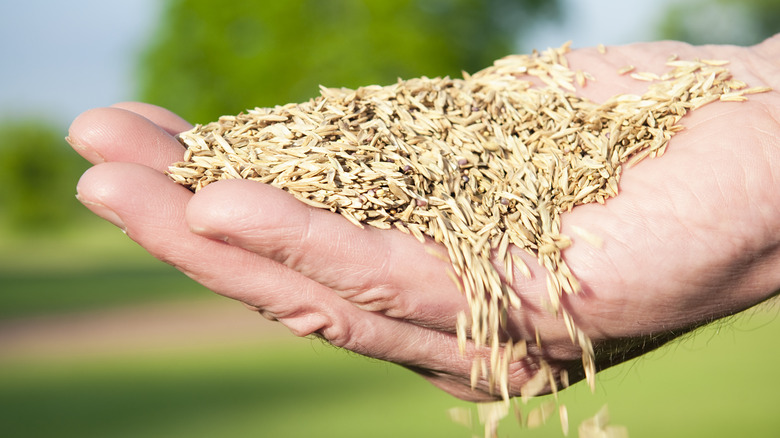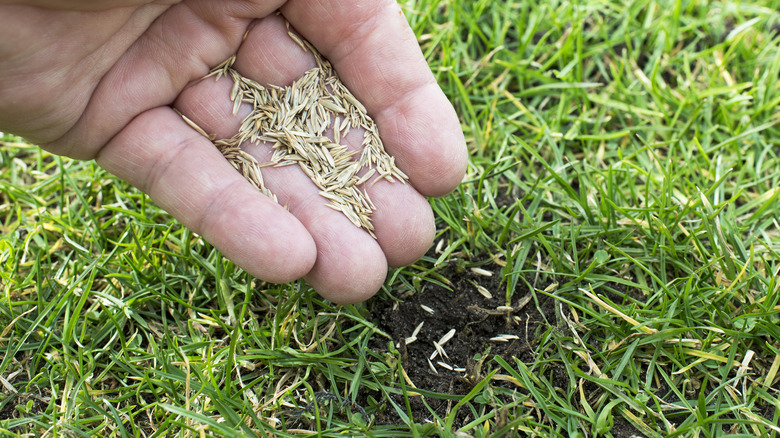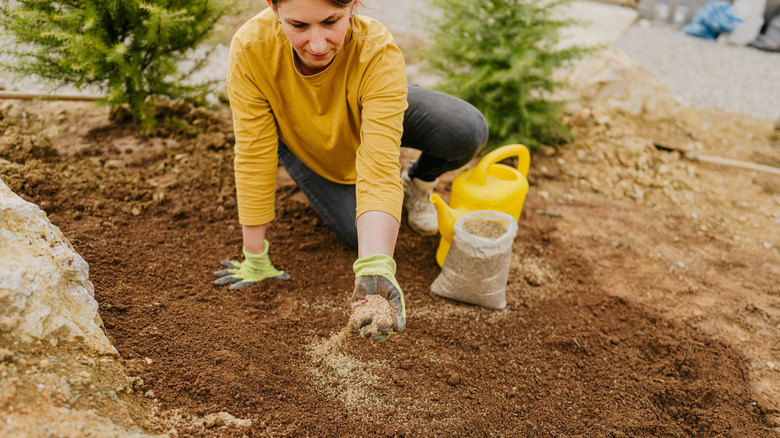The Cheapest Way To Spread Grass Seed Without The Help Of Lawn Tools
Spreading grass seed might bring to mind images of hauling around heavy, expensive equipment. Yet, you'll be relieved to know there's a simpler, wallet-friendly option at your fingertips: using your hands. This traditional technique stands shoulder to shoulder with other methods in terms of efficiency, tailored to fit various situations. On a good day, you could easily distribute seeds for 800 to 1,500 plants, with certain types boasting a germination and growth success rate of around 90%.
The hand-sowing technique is more art than science. You scoop up a good handful of seeds and employ a gentle back-and-forth wrist flick. This motion, not too dissimilar from seasoning a favorite dish, allows seeds to cascade evenly as you meander across the soil bed you prepared earlier. But what's the trick to achieving that lush, even spread? After covering the ground in one direction, you pivot 90 degrees to overlay a second, intersecting layer of seeds. This method, akin to cross-hatching in drawing, guarantees a uniform seed spread across your garden's canvas, ensuring no blade of grass feels lonely.
Considering the myriad seeding techniques available, from mechanical spreaders to hydroseeding, hand sowing stands out for its affordability and simplicity, especially for small or difficult-to-reach areas. However, it's not just about overcoming the logistical hurdles machinery faces; it's also about nurturing the land with a personal touch. It helps to understand the best situations for hand sowing and employ simple techniques to improve seed-to-soil contact.
When is it best to sow grass seeds by hand?
Hand sowing isn't suitable for every situation, yet in certain scenarios, it truly excels. One example is for smaller jobs. Imagine eyeing a patchy section of your lawn that needs filling in. These smaller-scale projects do not justify rolling out heavy machinery or breaking the bank. That's where the charm of hand sowing comes into play, offering a cost-effective and gentle solution. Steep slopes in your lawn are another challenge. Machinery might balk, but your hands won't. With hand sowing, you wield precise control over where each seed falls, ensuring they nestle into just the right spots to prevent erosion and encourage robust vegetation growth.
In more delicate or hard-to-reach areas — think precious habitats or secluded garden corners — bringing in machines could do more harm than good. For cases like this, hand sowing isn't merely an option; it's a vital practice. This method protects sensitive ecosystems and allows you to work harmoniously with the natural environment. Urban gardeners, too, will find hand-sowing invaluable. Amid city life, where every inch of green space counts, the precision hand sowing offers can make all the difference. It allows you to enhance your urban oasis without risking damage to existing plants or compact landscape features with unwieldy equipment. In essence, hand sowing equips you with the flexibility to cultivate your green spaces thoughtfully. It's also a throwback to simpler gardening times yet remains effective, allowing you to nurture your green space directly, seed by seed.
Tips for hand sowing grass seeds
Good planning is crucial to make hand sowing as efficient and effective as possible. First, spring is the best time of year to plant grass seeds for better germination. When sowing the seeds, start by marking your progress with flags. Whether you set them ahead of time or as you move along, these markers ensure you cover every inch of your garden without missing or overlapping areas. It's a simple strategy to guarantee that your efforts are as thorough as possible, ensuring even coverage throughout your garden.
Another crucial aspect of successful hand sowing is ensuring optimal seed-to-soil contact. You want those seeds to snuggle into the soil properly. Achieving this starts with a light rake over the area before spreading your seeds, creating a welcoming bed that invites seeds to nestle in. After distributing the seeds, another gentle pass with the rake helps cover them with just enough soil, protecting them from being picked off by birds or blown away by the wind. This technique fosters the right conditions for seeds to germinate, allowing them to still access the sunlight and water they desperately need to sprout.
You might also notice some seeds love to stick together, making it hard to get an even spread. Here's where a bit of ingenuity comes in: mixing your seeds with a carrier like sand or fine compost. This helps break up any clumps and gives you a better visual of where you've sown, ensuring an even distribution across the board.


